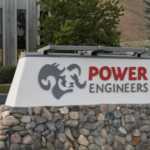As California moves toward a clean energy future, its demand for electricity is surging, fueled by the rapid electrification of homes, vehicles, and businesses across the state. The California Air Resources Board (CARB) estimates that electricity demand could increase by 76% by 2045 (relative to 2022), making expansion of the state’s transmission infrastructure crucial to keeping the lights on. At the same time, climate-related threats—such as wildfires, extreme heat, and severe weather events—are increasingly straining the grid, further highlighting the urgent need for modern and resilient transmission infrastructure. However, California is already grappling with an energy affordability crisis, and new transmission investments come with significant costs. To meet the state’s clean energy and reliability goals without further burdening ratepayers, innovative financing solutions will be critical.
Net-Zero California’s (NZC’s) and Clean Air Task Force’s (CATF’s) timely report, Wired for Savings: Evaluating the Impact of Alternative Transmission Financing and Development Models on California Ratepayers, explores alternative transmission financing and development models and their impacts on consumers. The results show potential for substantial ratepayer savings of up to $3 billion per year, or about $123 billion over 40 years, to the extent that this infrastructure is financed and developed through public-private partnerships.
The Challenge: Growing Needs and High Costs
Meeting California’s clean energy goals depends on the swift and cost-effective expansion of transmission infrastructure. Yet, the state’s efforts to enhance its grid face serious hurdles. Delays in transmission build-out—due to regulatory bottlenecks, environmental challenges, and escalating climate risks—are slowing the rollout of clean energy infrastructure. Without these vital projects, California risks straining its grid, raising costs for consumers, and compromising reliability.
To address these challenges, Transmission Possible, a project of Advanced Energy United and a coalition of partners, is working to educate, engage, and build support across the U.S. for enhanced and expanded transmission capacity. This coalition advocates for transmission infrastructure investments that don’t just power California’s clean energy future but also lower costs and create thousands of new living-wage jobs in the state.
However, building substantial new transmission infrastructure risks worsening California’s energy affordability crisis. Electricity rates in California have increased by as much as 51% over the past three years for investor-owned utility customers in the state, placing political and economic pressure on state leaders to build these lines with as little burden on ratepayers as possible. If new transmission infrastructure is paid for in the same way as the past 100 years, electricity rates will continue to rise at an overwhelming pace, potentially undermining the economy-wide transition to clean energy.
California leaders have recognized the need to think creatively about how transmission is financed. This is shown in AB 3264, which was enacted this year and directs the California Public Utilities Commission (CPUC) to explore alternative financing mechanisms for transmission.
Potential Solutions: Smarter Transmission Financing
In light of the challenges facing California’s grid, the Wired for Savings report provides three key recommendations to help accelerate transmission development while delivering savings for ratepayers:
- Use of low-cost public debt (bonds), which could directly reduce costs to ratepayers by enabling lower interest rates, replacing equity in the capital structure, and reducing taxes.
- Public-private partnership (PPP) and public ownership models to facilitate public financing, including certain types of PPPs or a wholly public development model, could indirectly reduce costs to ratepayers.
- Policies that streamline pre-investment and development processes to reduce the length, financial risks, and overall costs of transmission projects.
These strategies offer a pathway to faster, more affordable transmission expansion. By incorporating PPPs that encourage competition among developers, leveraging tax-exempt public funding, and balancing public oversight with private-sector efficiency, California can develop a grid infrastructure that supports its clean energy goals without overwhelming ratepayers.
A Path Forward for California’s Affordable and Clean Energy Future
To realize California’s clean energy future, policy makers must prioritize policies that embrace innovative financing models capable of supporting the state’s ambitious clean energy goals. As the demand for electricity grows, energy planning will be pivotal in meeting this demand sustainably and equitably. It is crucial to implement cost-saving mechanisms without delay, or risk overspending, which would place a significant financial burden on ratepayers and disproportionately impact disadvantaged communities.
Expanding transmission infrastructure and modernizing the grid must be approached with both urgency and a long-term vision that leverages financial innovation, strategic planning, and equitable distribution of resources. By acting decisively today, California can build the resilient, reliable, and efficient grid it needs to meet tomorrow’s demands.



